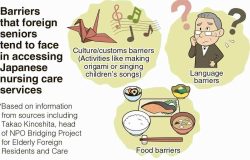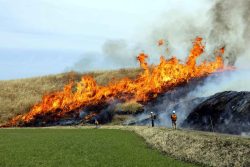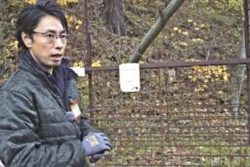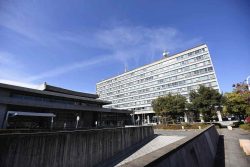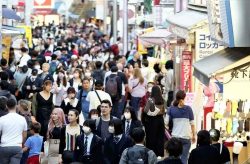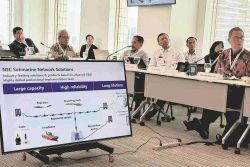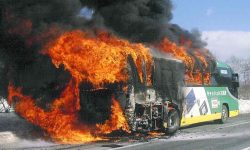Checking for Disaster Risks Vital After Moving to New Area; Expert Suggests Walking Around Neighborhood to Familiarize Yourself with Surroundings
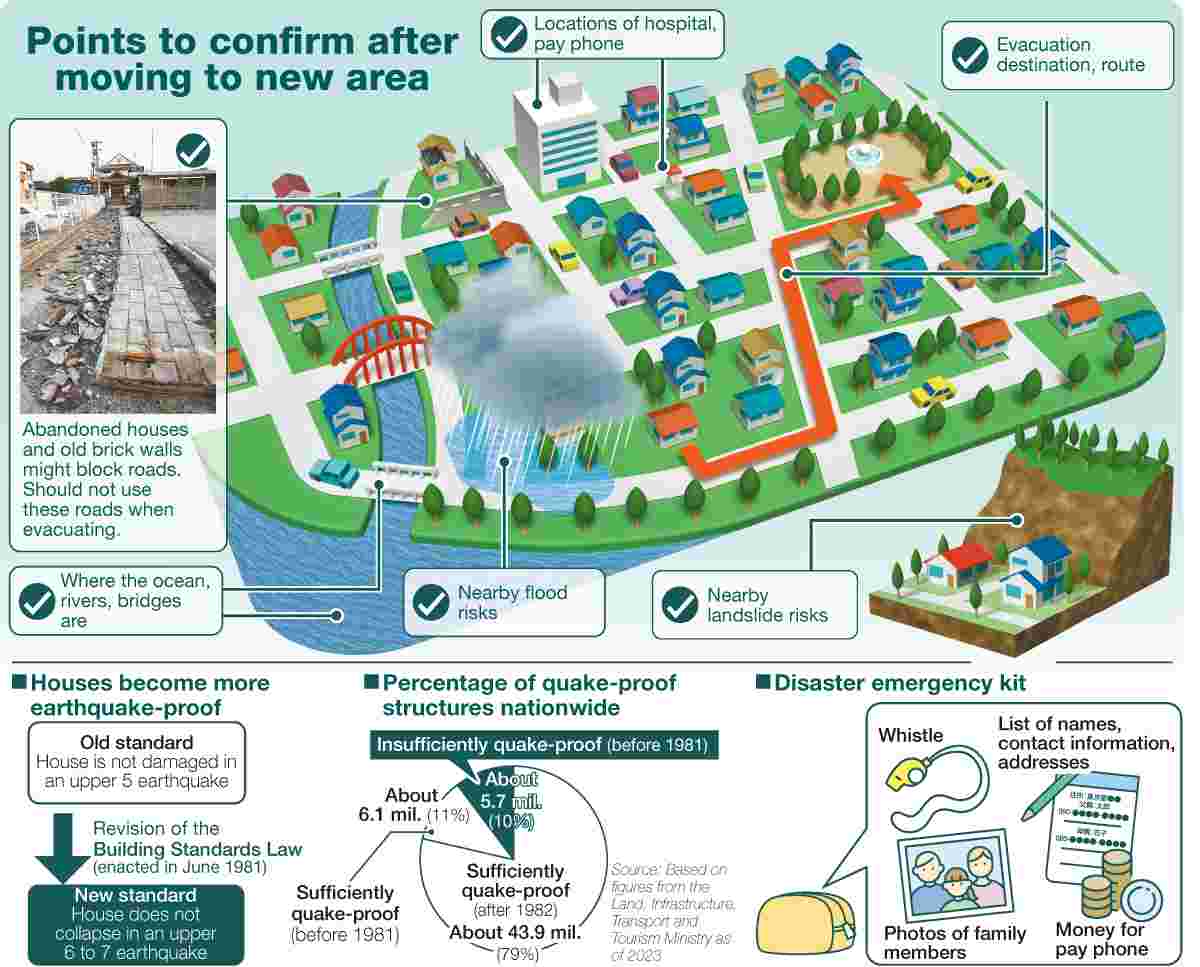
18:01 JST, April 17, 2025
Spring in Japan is a season of change as people move for their job or school, and many feel the excitement of meeting new people.
However, it is highly recommended that people also remember to prepare for possible disasters. It is important for a person to know what dangers there are in their new surroundings.
***
When people move to a new area, they generally do not know what is nearby.
Shiho Yanagihara, a disaster prevention expert, recommends people walk around their neighborhood so they can familiarize themselves with the area.
Yanagihara says that by walking around, residents can find places that might be useful in an event of a disaster, such as hospitals, parks, pay phones and vending machines.
Residents should confirm evacuation locations and know how to get there. They should also know which areas to avoid during a disaster, such as bridges over farming canals, steep slopes and brick walls that have cracks.
It will be helpful if all members of the household take walks around the neighborhood.
“It’s fine if they go see those places while on their way to work or shopping,” Yanagihara said. “I hope people are always aware of the risks of a disaster.”
If children change schools or nursery facilities, it is best to find out what the procedures are in an event of a disaster.
In urban areas, there are some students who commute for a long distance by train or bus.
“If you’re concerned, you should give your child an emergency kit,” Yanagihara said.
These kits are small pouches that include money to use a pay phone, a small notebook with the names and contact information of their parents or guardians, as well as their home address and photos of family members.
By doing so, “it’s easier for adults to help your child,” she said.
Earthquake-proof buildings
Residents, especially new residents, of an area need to know the disaster risks of their new houses.
“It’s important to know how the land and buildings could pose risks during a disaster,” said Takeharu Kodama, representative director of the Hazard Resistant House Laboratory in Tokyo.
The risks of specific places can be confirmed by looking at hazard maps and other such materials provided by local governments. Many local governments post such information on their websites.
One of the most recommended is the Land, Infrastructure, Transport and Tourism Ministry’s site, Kasaneru Hazard Map. Users can view a map and overlay different types of hazard maps, including for floods and landslides.
It is also recommended to know the risks posed by buildings in a disaster.
As a new earthquake-proof standard for buildings was introduced in June 1981, when the revised Building Standards Law was enacted, those built following the new standard are not expected to collapse even if an earthquake on the Japanese intensity scale of upper 6 to 7 were to occur.
Of all houses and buildings in Japan, the ministry estimates that as of 2023, 10%, or about 5.7 million, were built before the new standard was implemented, and are insufficiently earthquake-proof.
Recently, due to rising housing prices, more people are choosing to purchase old houses and make the necessary repairs themselves. Therefore, if the building is not up to the new standard, renovations need to be done in order to make the structure more earthquake proof.
“People need to make their houses safer by paying attention to disaster risks,” Kodama said.
"JN Specialities" POPULAR ARTICLE
-
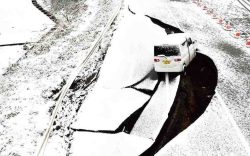
The Japan News / Weekly Edition (12/12-12/18)
-

Noodle Dining Shunsai / Rich Oyster Ramen to Savor at Odasaga; Experienced 68-year-old Owner Creates Numerous Ramen Varieties
-

The Japan News / Weekly Edition (12/5-12/11)
-

People Keep Loved Ones’ Ashes Close in Special Jewelry, Small Urns as Unique Way to Memorialize Them
-

The Japan News / Weekly Edition (12/19-12/25)
JN ACCESS RANKING
-
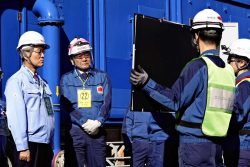
Keidanren Chairman Yoshinobu Tsutsui Visits Kashiwazaki-Kariwa Nuclear Power Plant; Inspects New Emergency Safety System
-

Tokyo Economic Security Forum to Hold Inaugural Meeting Amid Tense Global Environment
-

Imports of Rare Earths from China Facing Delays, May Be Caused by Deterioration of Japan-China Relations
-

University of Tokyo Professor Discusses Japanese Economic Security in Interview Ahead of Forum
-

Japan Pulls out of Vietnam Nuclear Project, Complicating Hanoi’s Power Plans



